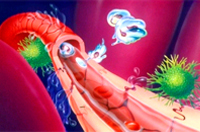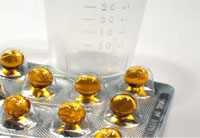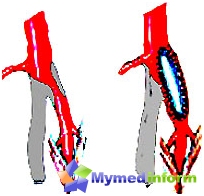Septic shock develops with bacteria to enter the body with reduced work of the immune system. The most commonly septic shock develops in children, the elderly and people suffering from chronic or oncological diseases.
Content
Septic shock concept
In the blood of any person, the lady of bacteria regularly falls on the blood of any person. It does not threaten a healthy person, since it is usually bacteria, falling into the blood, quickly absorbed by leukocytes - cells responsible for the work of the immune system. However, if the immune system is reduced, the immune system is not able to cope with microorganisms, which leads to sepsis - the development of human infection.
The danger of sepsis is that with blood flow, infection is distributed throughout the body, hitting vital organs. In some cases, sepsis leads to the development of septic shock.
Septic shock is called a condition in which as a result of the action of toxic substances that excrete bacteria, there is a sharp, threatening life reduction of blood pressure.
Usually, septic shock is found in newborns, people over 50 years old and in patients with a weakened immune system.
An ideal option for the development of septic shock people with a reduced number of leukocytes are becoming in particular, oncological patients or suffering from chronic diseases, such as diabetes or cirrhosis of the liver.
Development mechanism and basic symptoms of septic shock
 Septic shock develops with joint effect on the body of toxins, which are produced by pathogenic bacteria, and cytokines that are produced by the human organism to combat these bacteria.
Septic shock develops with joint effect on the body of toxins, which are produced by pathogenic bacteria, and cytokines that are produced by the human organism to combat these bacteria.
There is an expansion of blood vessels, which leads to a fall of blood pressure. At the same time, the frequency of heart abbreviations increases and the amount of blood emissions from the heart increases. In response to this, the permeability of blood vessels also increases, as a result of which the blood gets into the tissue, which leads to the formation of detections, and the blood supply to vital organs is disturbed - first of all, brain and kidneys.
The body is trying to raise blood pressure and blood vessels are narrowed, but in parallel there is a decrease in blood outlet with heart, so blood pressure remains extremely low.
Even per day, a person manifests the confusion of consciousness, which is caused by a deterioration in cerebral circulation, chills, temperature, frequent pulse. The patient often breathes, lightly work hard, which leads to a decrease in blood carbon dioxide. Blood pressure first rises sharply, then falls.
Later body temperature can fall below the norm, the lack of a number of organs, including kidneys, lungs, hearts.
More than 25% of cases, septic shock leads to a fatal outcome.
Diagnosis and treatment
Mandatory analysis with septic shock is blood test. With septic shock, leukocytes are monitored, platelets and the content of metabolic products (for example, urea nitrogen).
On the electrocardiogram (ECG), signs of heart rate disorders are monitored.
To identify the cause of the development of septic shock, sowing blood to determine the presence of bacteria and selection in the further rational temperature.
Treatment of patients with septic shock is carried out only in the hospital in the specialized department. To increase blood pressure, a large amount of fluid is introduced intravenously. For narrowing blood vessels, vasoconstrics are introduced, for example, dopamine. With the development of the respiratory failure of the patient, they are transferred to artificial ventilation of the lungs. Antibacterial therapy is used to combat septic shock. The choice and purpose of the drug circuit is carried out only by a doctor after receiving the results of sowing blood.









